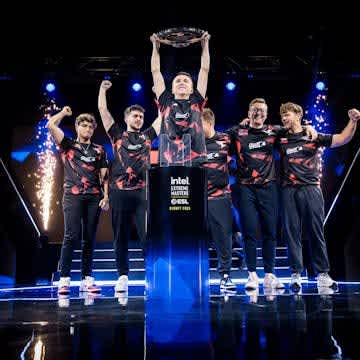Are we entering an era of international teams in Counter-Strike?
After many years of failed efforts, the past two CS:GO Majors were won by different international teams, and as we close down the curtains on this iteration of the game, we may be entering a brave new era where these multinational squads could become the norm, rather than the exception, at the highest levels of play.
Multiculture has arrived
It took seventeen Majors to finally crown an international winner. First, it was the Swedes, then the Brazilians, then the Danes who dominated, with the occasional CIS and North American upstart sprinkled in the mix. Some were close, sure: there was FaZe before FaZe, G2’s early sides, attempts here and there, but only now have we reached the point where teams of this ilk are clearly seen as elite-level squads.
Let’s take a look at the post-Major HLTV rankings to start. Vitality, with two Danes, two Frenchmen and an Israeli, are on top, followed by the all-Danish Heroic and the longstanding journeymen of FaZe. The two CIS big names – NAVI and Cloud9 – follow despite poor Majors. Then, the rest of the top ten is rounded out by international squads.
G2 (Bosnian, Australian, Danish and Russian), GamerLegion (Danish, Swedish, Polish and Romanian), Team Liquid (North Americans and a Latvian), Apeks (Slovakian, Norwegian, Swedish, Lithuanian, Macedonian), and Monte (three Ukrainians, a Pole and BOROS from UAE) serve as the vanguard of the elite, with ENCE in eleventh, featuring a Dane, an Israeli, a Spaniard, a Pole and Maden from Montenegro.
Scroll further down the list and you will find more international squads. NiP and Fnatic have both opted for an eclectic mix, much like OG and MOUZ. ITB and BNE also qualify. Dip into the high-stakes hellscape of tier 2 Counter-Strike, and you will find many more examples from sprout to Endpoint and beyond.
It’s clear that international rosters can now be found everywhere, from Major grand finals to the most cutthroat cash cups. It’s a far cry from CS:GO’s past, when squads of this ilk were rare to come by. So why this? Why now?
M for maturity
To understand the rest, you should study the best. Team Vitality’s road to the stage in the Accor Arena was long and full of trials and tribulations. With the firepower available to the side, their performances until the spring of 2023 were less than what neutral observers could have expected. Clearly, something has clicked. What might not be so clear is just how long all this has been in the works.
Wind back the clock to IEM Dallas 2022, where Vitality lost to Astralis and G2 and failed to make it to the playoffs. It was before the lower bracket final that zonic gave an extensive interview to HLTV’s Nohte, providing some important and granular insights about how painstaking the work is when it comes to establishing good comms in an international side.
“Staying on the philosophy side of things, there was also a lot about what can we do in different situations, with the communication we had to implement a lot of key words, buzz words, to shorten down the communication, to help some of the players who are not used to speaking English. It has become a lot better, but we still... what's good about this team is that we can clearly see our flaws that we need to work on, but it just takes time because none of us have tried this before.”
Crisp communication is key in high-level CS:GO matches, and it’s no surprise that zonic painstakingly revamped and adjusted the protocols on Vitality, coming up with shorthands and terms that made it easier for the players with lesser English skills on the squad to quickly relay and receive information. With how fast-paced the game is, a single uhm before your call can make your break a play.
From a blueprint perspective, trying to establish an international roster makes a lot of sense. Having a larger pool of players to scout and select from is a simple net positive. However, cultural clashes and communication issues can bring a lot more in the “against” column. This is where the proper support staff comes in.
It’s also well-worth exploring zonic’s motivations:
“It was about challenging myself. I think I have accomplished whatever I could in Astralis, and for me it was either staying in Astralis and trying to rebuild the team to reach new heights, or it was about challenging myself. In that time, FaZe has done it, but my goal was pretty much to do what no one could have done in the sense that making an international team really succeed, I think a lot of people have tried. We are moving in that direction in the future.”
Who knows where esports will be in a few years, and how the finances will look like, but the VC cash splurge of the past few years allowed for a rapid professionalization of the roster-building experience. Better coaches, sports psychologists, analysts, you name it: all these resources coming in just as the complexity and depth of the gameplay kept reaching higher and higher highs, further expanding the possibility space.
The early advantages of tech-friendly nations like Sweden and Denmark have mostly been leveled out in the years since, too, reducing the benefits of shopping locally even for orgs like Astralis and Heroic.
Perhaps international rosters were always possible, and we just couldn’t see them. But now they are here, and they are here to stay. Fresh off their Major triumph, Vitality won’t even be at Dallas this time – but there will be plenty of other international teams looking to replicate their recent successes.
Photo credit: HLTV






